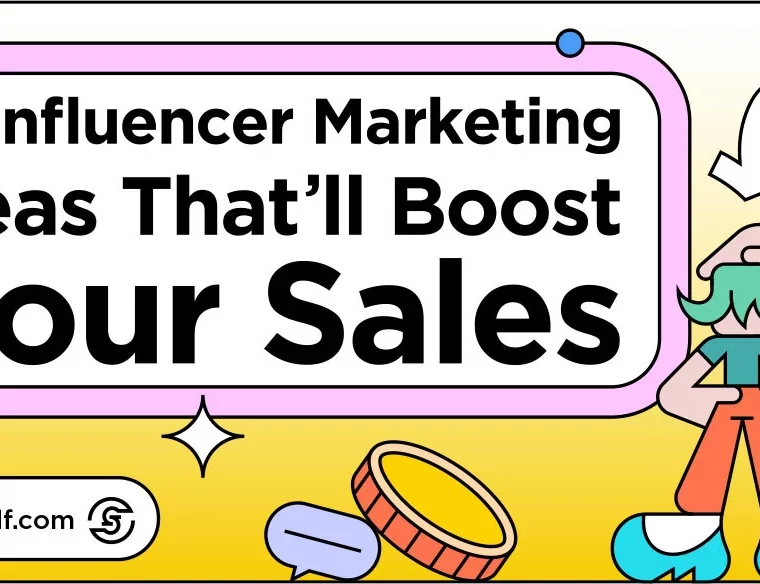Wake up and smell the school supplies! It’s that time of year again. Shopping is already well underway for the 2024 school year, but it’s not too late to get marketing. We’ve compiled six back-to-school trends to show what’s influencing shoppers this year and how you can leverage those learnings in your campaigns.
Nearly 70 million students will head back to class this fall. That leaves millions of pencils to be sharpened and folders to be filed. But how are parents and students structuring their back-to-school spend? We’ve scoured the reports and social media to find the most relevant and impactful back-to-school trends for marketers in 2024.
Uncap your highlighter! It’s time to begin.
Trend #1: Parents Take a Value-First Approach to Back-to-School Spending
In total, back-to-school and back-to-college spending are set to top $126 billion this year. That nets out to an average $875 spending per household for K12 students. And $1,365 per household for college students. This spending spree represents the second-largest annual expenditure for the average family. And parents are feeling it this year amidst a cost-of-living squeeze.
Nearly three in four parents (73 percent) are concerned about the climbing prices of everyday items. 62 percent will be shopping from a fixed back-to-school budget. And 40 percent of respondents in a Deloitte back-to-school survey said they would have to cut back on school supplies if those budgets become strained.
It makes sense that parents are exhausted balancing everyday expenses with major back-to-school purchases. That’s why they’re laser-focused on deals this year. A vast majority (85 percent) will be shopping back-to-school deals and promotions. And they’re willing to put their money (and their coupons) where their mouth is.
Value trumps loyalty this back-to-school season. 62 percent of shoppers will switch from their preferred brand if another has lower prices. In terms of 2024 back-to-school trends, the bottom line is, the best sale wins.
Opportunity for Marketers: Deliver Deals
This year it’s all about the sales. Put yourself in back-to-school shopping parents’ shoes. How can you help them get the most bang for their buck during this exhausting time?
Consider these deal-driven campaign ideas:
- Offer discounts on bulk options. The more they buy the more they save! This can be especially helpful for parents and teachers wanting to stock up for the entire school year.
- Create a promotional offer for the parents. For example, purchasing xyz for their kids’ back-to-school lists earns them abc reward for themselves. Parents deserve to treat themselves!
- Run giveaways, contests, and UGC campaigns that give out discount codes for participation. That way, content is being shared across socials to advertise your brand and back-to-school deals. And participating creators, parents, and students, reap the benefits of creating that content, whether they win the grand prize or not.
Trend #2: Early Shoppers Get the Back-to-School Savings
The early bird gets the worm, as they say. In this case, the worm is the best back-to-school prices and the birds are parents of school-age children doing their back-to-school shopping. You get it. It’s alright if your brand slept in this back-to-school season. But it’s important to remember for next year that the bulk of shopping starts early.
While 22 percent of back-to-school shoppers started making purchases as early as June, Prime Day marks the unofficial start of back-to-school season. This year on July 16 and 17, Amazon and its merchants raked in a staggering $14 billion. It’s estimated that a healthy chunk of that spending was devoted to back-to-school efforts. Nearly half (48 percent) of back-to-school shoppers planned to take advantage of Prime Day Deals.
By mid-July, 86 percent of shoppers still had the majority of their shopping to complete. But 66 percent of all back-to-school spending is expected to be completed by the end of the month. And it makes sense why. More than half (59 percent) of shoppers believe the best deals happen earlier in the season. They don’t want to miss out.
If you missed the boat on offering major deals early in this back-to-school season, don’t fret. There’s still a significant portion of shopping to be done before students head back to school this fall. You can offer deals for those who overslept those dreaded back-to-school alarms.
Opportunity for Marketers: Plan Ahead
This ship may have already sailed for the 2024-2025 school year. But we don’t see this trend going away any time soon. Go ahead and mark your calendar for May or early June of next year so you can get your back-to-school marketing campaigns up and running by early July.
Remember, back-to-school shopping is a major expenditure for families each year. The best way to convince K12 parents to shop your brand’s back-to-school deals is to give them discounts and sales they can’t refuse.
Start brainstorming those sales early and you’ll be ahead of the back-to-school trends for next year!
Trend #3: Convenience is Key
Convenience is the number two driver of back-to-school spending this year. Next to sales and savings. A whopping 70 percent say convenience is their top driver for back-to-school spending decisions. Parents want the easiest shopping experience possible. They want options, deals, and ease.
Think quick and easy delivery, free shipping, easy returns, guaranteed value, and no hidden fees. They want transparency, value, and convenience above all. Convenience for many parents means shopping from home. 70 percent of back-to-school shoppers use multiple channels to fulfill their lists. Parents plan to shop across 4.7 channels on average. That’s up from 3.9 last year. So convenience doesn’t necessarily mean one-stop-shopping. It means easy, worry-free shopping.
Opportunity for Marketers: Make it Easy
Essentially, parents want their back-to-school shopping to be as frictionless as possible. They have enough to juggle this time of year plus a cost-of-living squeeze to contend with. Help out shoppers and make it easy this year.
Here are some ideas for campaigns that prioritize convenience:
- Offer free shipping and returns as a back-to-school promotion.
- Create back-to-school bundles based on the shopping lists of students in your area. That way parents can knock lots of items off their list in one click.
- Add value wherever possible and lead with ease! Don’t make shoppers jump through hoops or search for coupon codes to get the best deals. Offer them clearly and easily and you’ll attract even more shoppers.
Trend #4: Social Media Shapes Back-to-School Shopping
Would we even be an influencer marketing blog if we didn’t talk about the social media back-to-school trends? Parents and students alike are scrolling this back-to-school season, and it’s influencing their purchasing decisions. Shoppers use social media for product discovery, deal digging, and to make purchases directly in the apps.
One in three back-to-school shoppers are using social media on their path to purchase. And one in eight plans to make a back-to-school purchase directly from a social media app. 78 percent of back-to-school shoppers are scrolling to find products and explore reviews and recommendations. Another 62 percent are using socials to find promotions, secure coupon codes from their favorite influencers, and dig into the best deals.
Of course, many students are turning to socials for back-to-school inspiration. Especially the back-to-college crowd. TikTok and Instagram seem to be the favorite platforms for back-to-college inspiration. 31 percent of 18- to 20-year-old shoppers look to Instagram for back-to-college inspiration. And 29 percent of that group look to TikTok for the same.
Opportunity for Marketers: Get Influential
Here at The Shelf, you know we love an influencer marketing campaign. With so many students and parents scrolling on social media for back-to-school and back-to-college inspo, it’s a great time to work with influencers who are students. And influencers who are parents of students. Use social media to inspire, advertise deals, demo products, educate shoppers, or run promotions and giveaways.
Check out these back-to-school campaign examples from TikTok. From left to right: a user-generated back-to-school shopping haul, a branded back-to-school promo code, an influencer post providing inspo for what branded products (in this case Adidas shoes) are great for back-to-school, and a what’s-in-my-backpack video featuring back-to-school products.
Trend #5: Shoppers and Students Use Generative AI Tools
AI is here to stay whether we like it or not. And it can provide incredible benefits for students, shoppers, and brands when wielded responsibly. Deloitte reports that 18 percent of shoppers plan to use AI on their purchase journey this back-to-school season. So how are they using it?
- 76 percent use AI to find helpful product reviews
- 62 percent use AI to find deals and spend less
- 35 percent use AI to save time
Families aren’t just using AI to make school-related purchases. Many students are using AI in school. 23 percent of parents say their children are using AI for academic purposes either in school or at home. That’s up from 15 percent in 2023. And 35 percent of parents believe AI is a positive school for their kids’ academic performance and learning experience.
Opportunity for Marketers: Embrace New Tools
Lean into emerging technology. The best thing to do for your brand and your bottom line is to hop on the AI train and figure out how it can work for you. AI can be used to analyze data, automate tasks, and personalize shopping experiences.
Step One: Understand how shoppers use AI to make purchases this back-to-school season.
Step Two: Understand how generative AI can make your own marketing and campaign efforts easier.
And Step Three: Create a plan at the intersection of those AI benefits. A great way to ensure you’re discoverable and showing up when your customers use AI to shop is to increase your touchpoints. That means creating cross-functional campaigns that take advantage of all kinds of emergent technologies. (Think cross-channel social campaigns, digital wallets, shoppable content, AR, VR, interactive video streaming, etc.) And don’t sleep on the power of SEO. These AI algorithms pull from the web. Make sure you’re a top search result where appropriate.
Trend #6: Back-to-School Shoppers Care about Sustainability
In 2024, Gen Z and Gen Alpha rule the schools. These youngest generations are more activism-minded than many of their predecessors, citing climate change and sustainability as major issues they’re concerned with.
According to a 2024 Deloitte survey, 64 percent of Gen Z are willing to pay more to purchase sustainable products. In a year with a palpable cost-of-living squeeze, this is more impactful than ever. And their younger counterparts are following suit. 81 percent of parents of Gen Alpha children report that their children have influenced them to be more sustainable consumers.
When it comes to back-to-school shopping, climate activism is absolutely on shoppers’ minds. As parents prepare their children for the future, it makes sense they’re taking into account their cultural values. In fact, 71 percent of back-to-school shoppers say sustainability is important to them. Similarly, 67 percent of back-to-college shoppers will prioritize sustainability this year. And 43 percent will purchase pre-owned products when available.
Opportunity for Marketers: Go Green & Get Thrifty
If your brand employs sustainable practices, now’s the time to shout it! Especially if you’re targeting school and college-age shoppers or their parents for this back-to-school season.
Sustainability is more than a back-to-school trend. It’s here to stay. If you’re targeting Gen Z and Gen Alpha, it’s time to start thinking about how you can make your campaigns and business practices greener. One in four Gen Z shoppers has ended or lessened relationships with brands that have unsustainable practices. And they don’t show signs of letting up anytime soon.
Aside from making sure your products and services are ethically and sustainably sourced, there are plenty of ways to incorporate sustainability into your campaigns. For example, you could:
- Offer rewards or loyalty points for shoppers who post your products in conjunction with sustainable actions. Example: Wearing your apparel during a beach cleanup or using your stationary materials to make protest or anti-littering signs.
- Make your values known. Encourage influencers and shoppers to share how they live out their sustainability values in their daily lives, preferably using your products and services. And share how your brand does the same.
- Start a buy-back program to discourage excess waste when your customers are through with a product. And allow customers to purchase returned or gently-used items at discounted rates.
That’s a Wrap on 2024 Back-to-School Trends
There you have it. The back-to-school trends dominating 2024 are value, convenience, timing, social media influence, an uptick in AI, and sustainability. Hopefully we’ve identified at least one trend that can help you shape a winning campaign this back-to-school season and beyond.
I remember back-to-school shopping as a magical time full of possibility for the school year ahead. Parents with class lists pushing carts in big box stores filled with notebooks and pencils.
And back-to-school shopping still looks like that for many families. But more than ever, back-to-school shopping is happening online, across social media, and with the help of generative AI.
This is great news for marketers. There are more touchpoints for you to connect with back-to-school shoppers and help parents ease the burden of this large annual expenditure. We hope these trends help you identify the needs of your customers as you meet them on their back-to-school path to purchase.
If you’d like assistance creating marketing campaigns using these back-to-school trends (or beyond), don’t hesitate to reach out. Our strategy experts are happy to help. Schedule a strategy call with us today!

About This Author
Ariana Newhouse | B2B Writer
I am a freelance writer and comedian based in Los Angeles. While making people laugh is my jam, it’s not always the company brand. So, I strive to make people feel something. My writing philosophy is collaborative, empathetic, and humanistic. At the end of the day, no matter the message, there are real people on both ends of the process.






